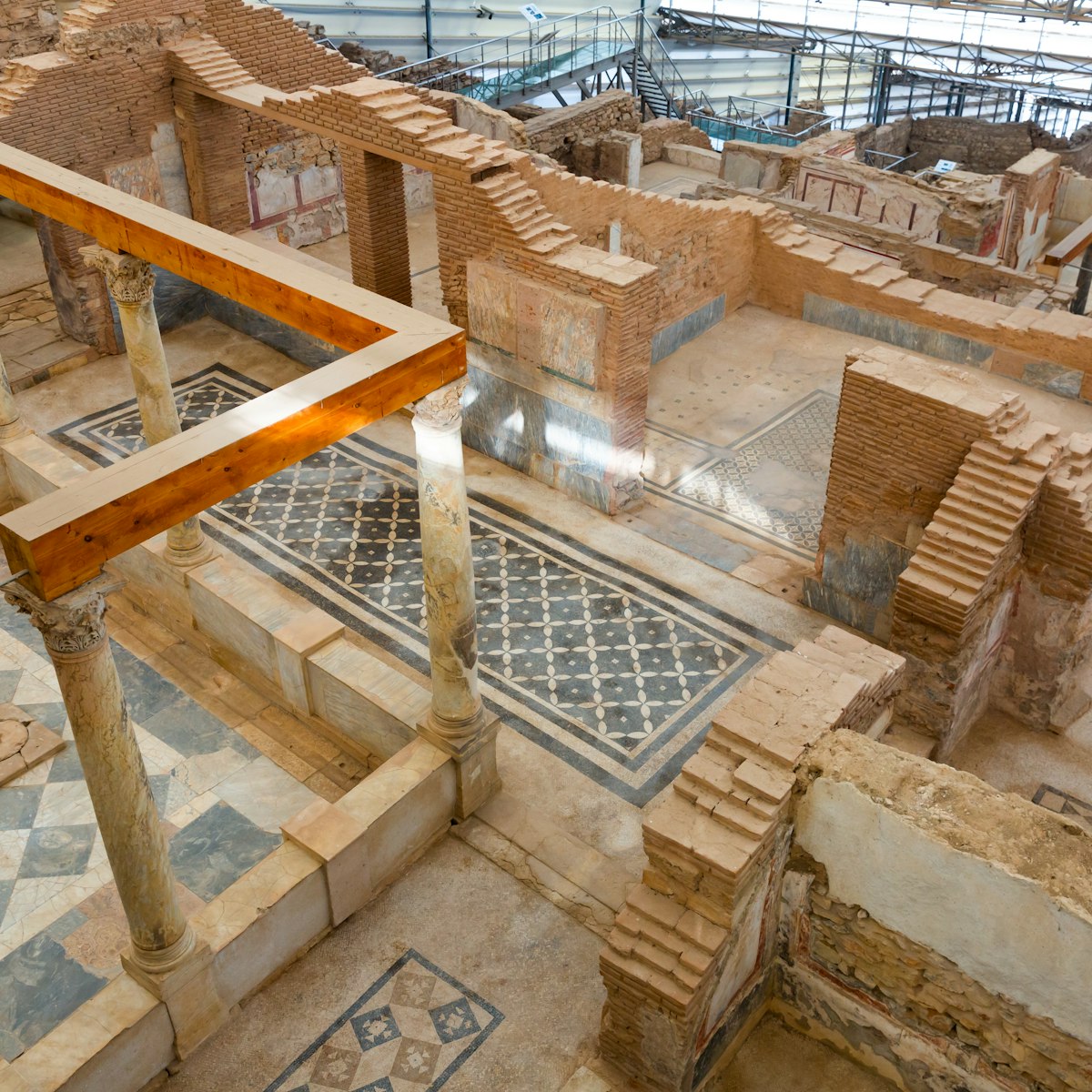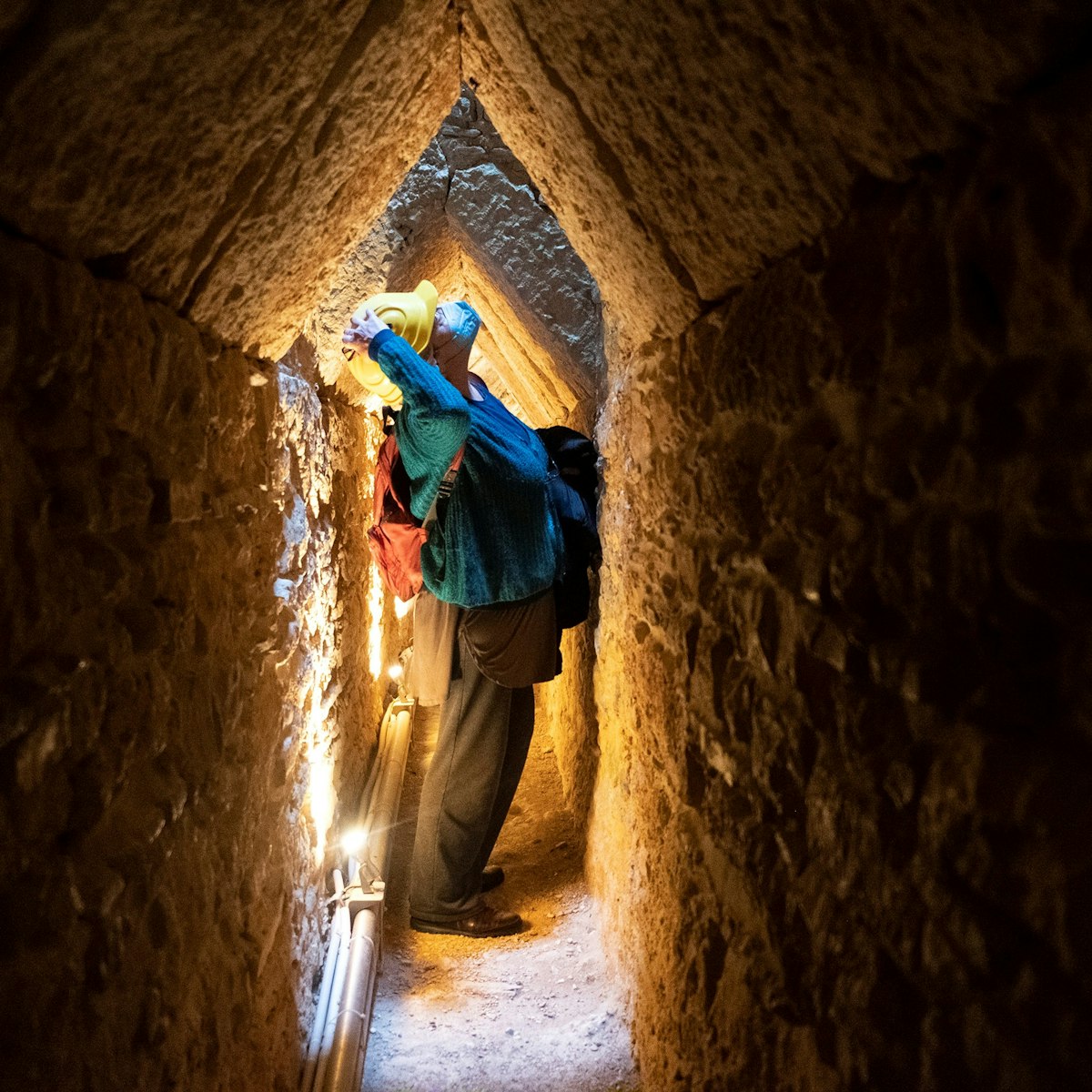A side road called Sacred St running along the western edge of the Upper Agora led to the Asclepion, the medical centre of Ephesus. Protected by the god Asclepius and his daughter Hygieia, doctors used the Rod of Asclepius snake symbol to indicate their presence; look nearby for the block of marble with such a symbol as well as a pharmaceutical cup.
The serpent was used as a medical symbol because of the snake’s ability to shed its skin and renew itself. At the same time the ancients also knew that snake venom had curative powers. Ephesus was famous for its medical school.





